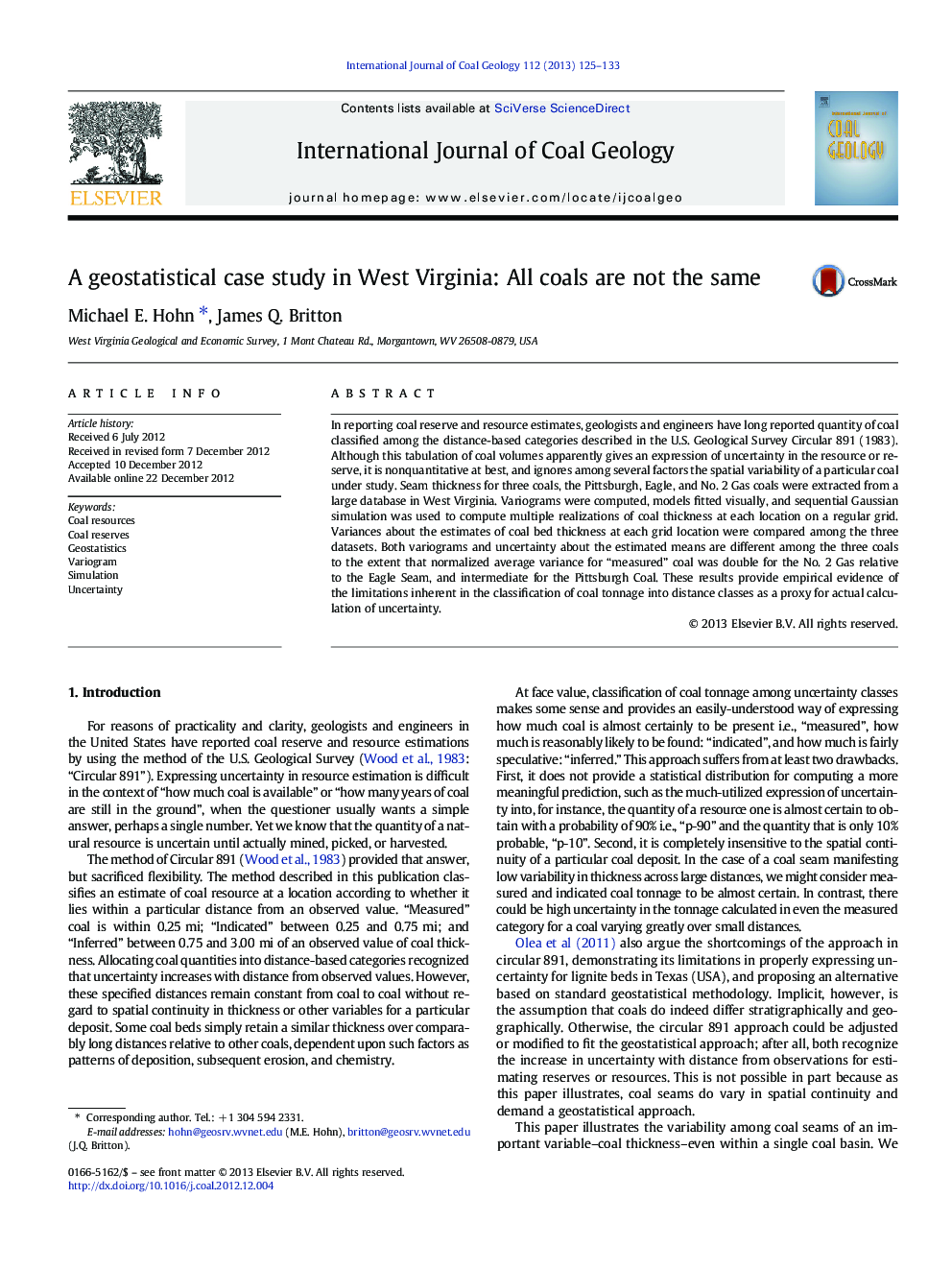| Article ID | Journal | Published Year | Pages | File Type |
|---|---|---|---|---|
| 1753400 | International Journal of Coal Geology | 2013 | 9 Pages |
In reporting coal reserve and resource estimates, geologists and engineers have long reported quantity of coal classified among the distance-based categories described in the U.S. Geological Survey Circular 891 (1983). Although this tabulation of coal volumes apparently gives an expression of uncertainty in the resource or reserve, it is nonquantitative at best, and ignores among several factors the spatial variability of a particular coal under study. Seam thickness for three coals, the Pittsburgh, Eagle, and No. 2 Gas coals were extracted from a large database in West Virginia. Variograms were computed, models fitted visually, and sequential Gaussian simulation was used to compute multiple realizations of coal thickness at each location on a regular grid. Variances about the estimates of coal bed thickness at each grid location were compared among the three datasets. Both variograms and uncertainty about the estimated means are different among the three coals to the extent that normalized average variance for “measured” coal was double for the No. 2 Gas relative to the Eagle Seam, and intermediate for the Pittsburgh Coal. These results provide empirical evidence of the limitations inherent in the classification of coal tonnage into distance classes as a proxy for actual calculation of uncertainty.
► Classifying coal resources by distance categories is examined with geostatistics. ► Variograms are compared for three coal thickness datasets from West Virginia, USA. ► Uncertainties in coal resources are computed through sequential Gaussian simulation. ► Geostatistical approach outperforms distance classes in expressing uncertainty.
